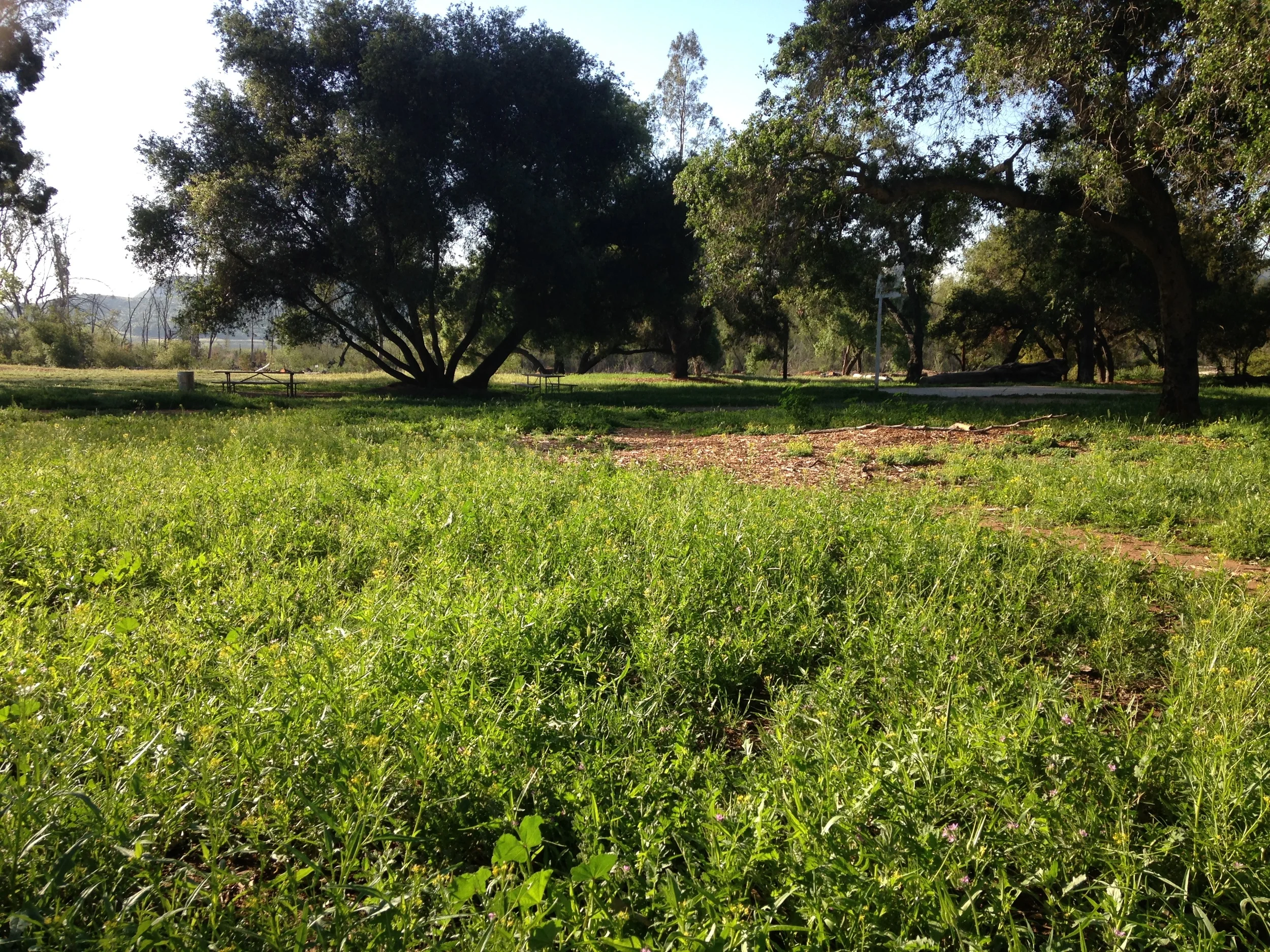When working to restore native ecosystems, weed control becomes absolutely paramount. The dramatic effect is seen in this photo (above), comparing a mature Englemann oak on the client’s property with a neighbor’s tree in the distance. Notice that the tree in the foreground has had all weeds removed, whereas the neighbor’s tree is still choked in oat grass, mustard, fillaree, and brome (all non-native). The client’s tree is vigorous, it’s yellow color coming from the blossoms that are covering it. It is currently putting on 3 feet of new growth per year. The neighbor’s tree is barely surviving, no flowers (and no acorns-no babies). This photo really illustrates the concept of weeds vs. natives as an ecological switch-you either have weeds, or you have natives. They do not co-exist well. Next time you chance upon a healthy stand of chaparral, take a look inside. There are no weeds. If you can get to 70% canopy coverage with your native plant community, and you use good mulch and no "artificial life-support", then the natural weed inhibiting characteristics of your native landscape kick in.
Natives Come Roaring Back
Weed control spells the difference between success and failure on a native restoration. Note the health of the oak trees and the return of long dormant and volunteer natives back on to the clean site.
Native Landscaping Books
The California Landscape: The Homeowner's Design Guide to Restoring Its Beauty and Balance, by Greg Rubin and Lucy Warren, is available from Amazon.
Greg Rubin and Lucy Warren's new book The Drought-Defying California Garden: 230 Native Plants for a Lush Low-Water Landscape, is available from Amazon.











